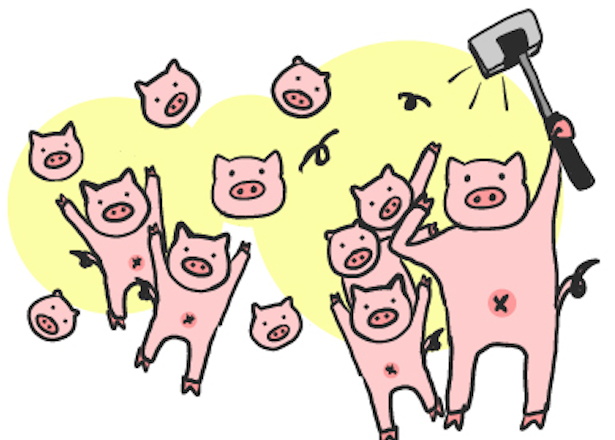Phones are revolutionizing the hog industry
November 19, 2019
History books are full of firsts. The first country to land on the moon. The first electric car. The first successful heart surgery.
Now, the South Dakota State University Swine Education and Research Facility can add its name to that list of pioneers.
For the first time, consumers can get a live look inside a functioning swine barn from the comfort of their home through virtual farm tours, an opportunity only available through SDSU.
On Nov. 5, 113 industry professionals made their way to Brookings for SDSU’s third annual Swine Day to learn about this new technology in agriculture as well as other research projects occurring on campus.
The virtual tours began December 2017 through a project called “Operation Main Street” in collaboration with National Pork Board. Students give virtual tours to people all over the United States via Zoom, a video conferencing software similar to Skype.
These tours are designed to create transparency between what the farmer does and how it ends up on the consumer’s plate.
There are six undergraduate and graduate students on campus trained to give the 7-10 minute tours of the farrowing room. The tours are given as the sows are giving birth or right afterward.
By the end of 2019, students will have given 47 virtual tours, with that number expected to grow in the coming years.
Morgan Busack, senior agriculture leadership and swine science major got involved with “Operation Main Street” this summer.
“This is a great way for (swine producers) to tell our story and our ‘why’ behind what we do. It has also benefited my speaking ability and community outreach,” Busack said.
Students interested in becoming leaders go through an application and interview process where they then go to training for two days to learn how to talk to consumers.
On Nov. 20, they will be giving a tour to the grocery chain Aldi’s staff, which is headquartered in Chicago.
“Their customers have questions about how their meat is raised, so they decided to get a firsthand look,” said Cameron Pewe, Swine Education and Research Facility Manager at SDSU.
Because the pigs are housed indoors, consumers sometimes think farmers are treating them inhumanely.
In reality, the pigs are indoors for biosecurity reasons, according to SDSU professor and swine extension specialist Robert Thaler.
“From a biosecurity standpoint, pigs get diseases from two places: other pigs and people,” Thaler said. “In order to keep pigs healthy, we keep them in a controlled environment where other people can’t come in.”
Spreading the word about pork production is why “Operation Main Street” was created, which was also one a goal of SDSU President Barry Dunn.
“When we started this new swine unit project, President Dunn, who was dean at the time, talked about how his goal for the unit was to demystify pork production,” Thaler said. “Virtual farm tours take that demystification worldwide.”
Katelyn Zeamer, an animal science graduate student, has given 20 tours throughout her time as a virtual tour leader.
“It’s been interesting to see people’s reactions after the tour. A lot of people expect it to be dirtier,” Zeamer said.
Common audiences include veterinary colleges, chef associations, dietitians and nurses. Averaging 50 people per tour, the audience can be as many as 200 people.
The on-site swine unit has 150 sows that produce 3,600 piglets every year. They run a batch farrowing system, meaning a group of about 24-32 sows give birth to their piglets each month.
Having experience in this barn and “Operation Main Street” is huge, according to Pewe.
“It’s great for the region, because there are lots of hogs and lots of companies looking for good help,” said Pewe. “Students in this program are almost guaranteed a job or internship.”
“Our imagination is our only limitation,” Thaler said the operation’s future.
A page in the history books might be waiting for SDSU’s swine unit.
























